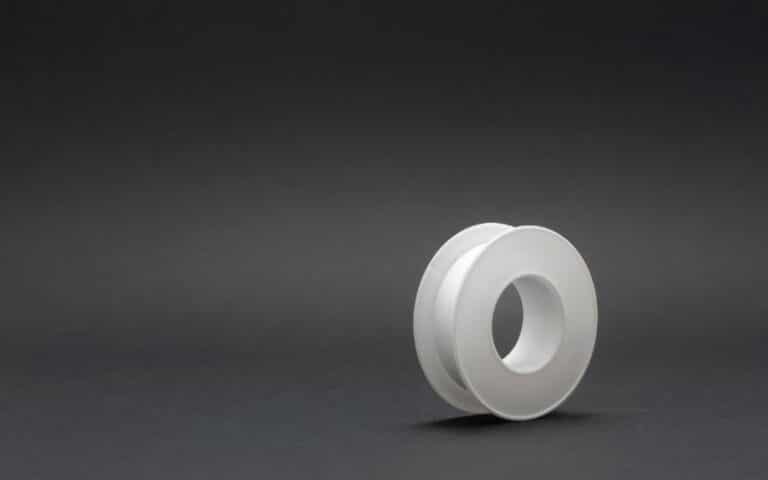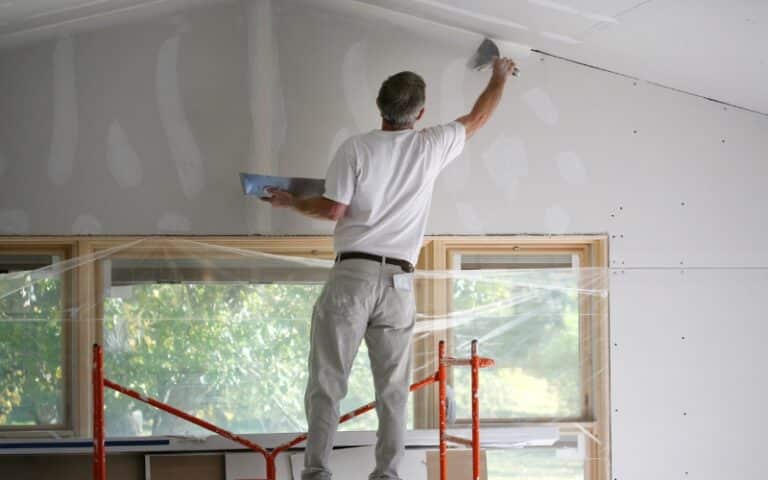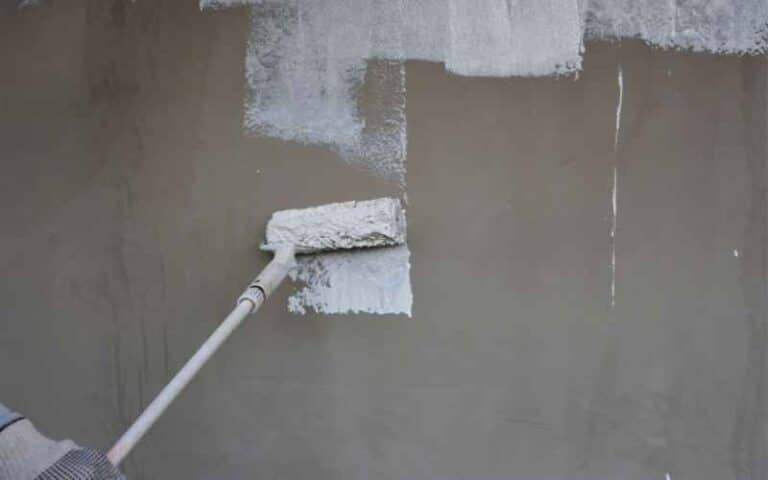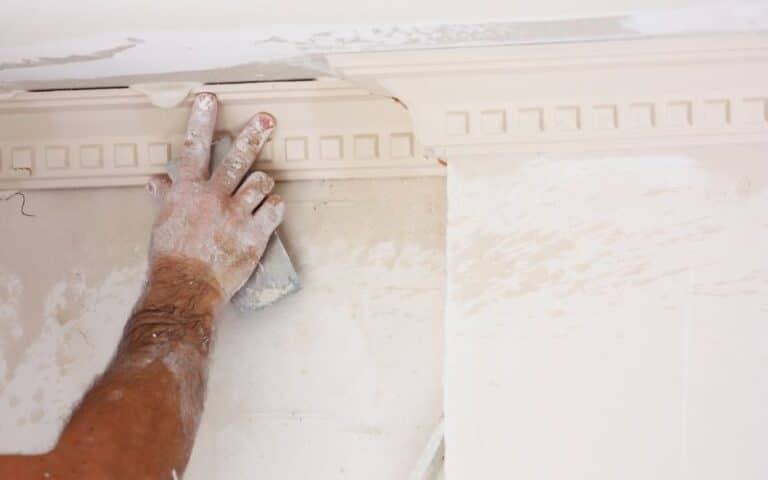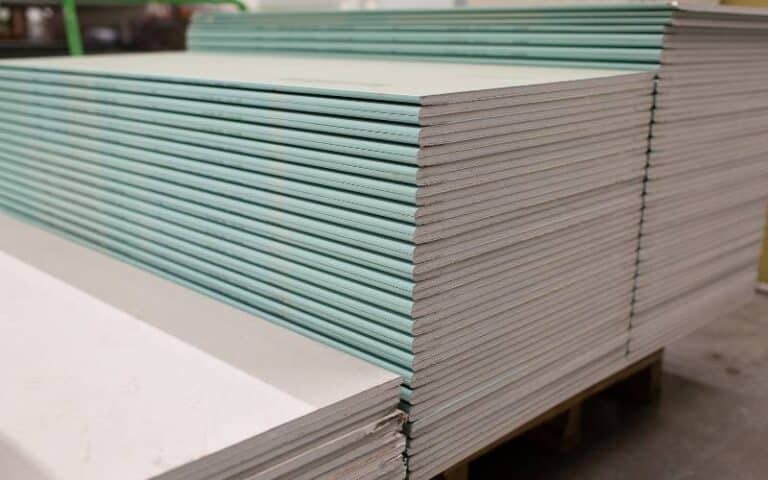Regarding basement finishing, selecting the appropriate materials for the job significantly affects the finished space’s quality.
Nonetheless, drywall is one of the essential components of any basement renovation.
However, as a homeowner, you might wonder if you can use regular drywall or require a special type of drywall in your basement.
You can install regular drywall in your basement. However, regular drywall is quite susceptible to moisture as each panel contains two paperboards and gypsum, which are not water resistant. Furthermore, it is advisable to use moisture-resistant drywall for your basement as it has more humidity than other parts of your home.
This article will explore the different types of drywalls and provide the information you need to make the right decision.
You will also discover how to calculate the drywall you need for your basement and the best drywall.
Ready for a Drywall Quiz?
Can You Use Regular Drywall in the Basement?
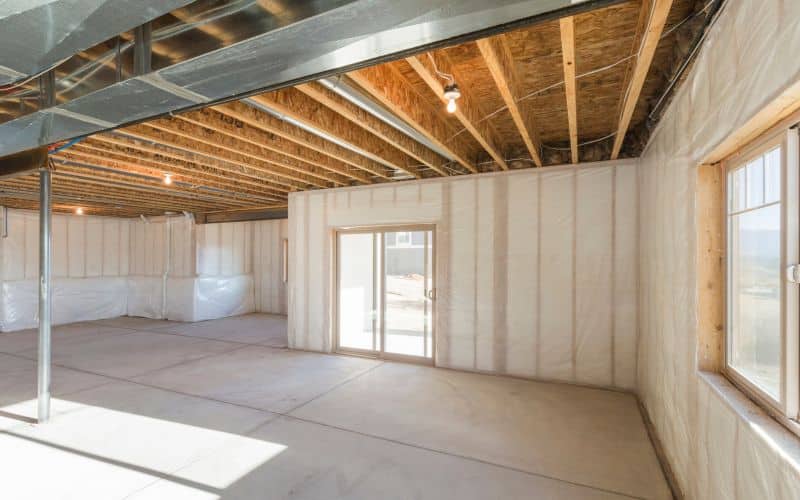
Yes, you can install regular drywall in your basement, but there are several factors you might need to consider before making that decision.
One of the main issues with using standard drywall in your basement is its susceptibility to moisture.
Basements are generally more humidity-prone due to their location below the ground. Moreover, regular drywall does not resist moisture.
This quality can result in the growth of mold and mildew on the drywall, which leads to health concerns and damage to the drywall.
In such cases, you must use moisture-resistant or cement board drywalls instead.
Fire resistance is also another concern. Regular drywalls are often less fire-resistant than you think. Moreover, this concern can pose a safety hazard in a fire outbreak.
However, local building codes might require you to use fire-resistant drywalls in certain parts of your basement, such as near the furnace or water heater.
Therefore, depending on your needs and budget, you must check with a professional contractor to determine the best drywall for your basement.
What Kind of Drywall Should You Use in a Basement?
Among the different types of drywall, purple drywall is the best option for your basement as it is highly fire-rated and moisture and mold resistant.
However, regarding choosing between different drywalls for your basement, there are varying factors to consider. Two of the most important factors are moisture resistance and fire resistance.
If your basement is susceptible to moisture, it is advisable to use moisture-resistant drywall or a cement board variant.
This drywall resists moisture, controlling mildew and mold growth on your basement drywall. Moreover, it is durable and less prone to sag or absorb moisture over time.
The rate at which your drywall can resist fire is also essential when selecting basement drywalls.
In cases of fire outbreak, a fire-resistant drywall will slow the spread of flames, giving occupants more time to leave the house safely.
Therefore, you should consider the drywall’s safety and durability before purchasing and installing it in your basement.
However, there various kinds of drywalls that offer both moisture and fire resistance. One of these types of drywall is the paperless drywall.
The drywall contains fiberglass mats in its core instead of paper. This quality makes it more resistant to mold, moisture, and fire.
Another type of drywall in this category is cement board drywall which consists of cement and fiberglass reinforcement.
Furthermore, the cement board drywall is highly moisture and fire-resistant. However, it is heavier than the regular drywall, making it more challenging to work with.
However, choosing the right drywall for your project depends on the cost you can afford to spare and the use of the drywall in your basement.
Do Basements Need Mold and Moisture-Resistant Drywall?
Yes, basements require mold and moisture-resistant drywalls as they are often below ground level, making them prone to high moisture content.
However, regular drywall may be sufficient if your basement has proper ventilation and no history of moisture issues.
Basements are often more humid than other parts of the house due to their location. Therefore, you must carefully select the correct drywall for your basement.
Mold and moisture-resistant drywalls are important in resisting mold and mildew growth, making them a better choice for basement areas.
This type of drywall consists of moisture-resistant paper that prevents moisture buildup, which can cause mold growth.
It also has a fungicide treatment that repels the growth of mold and mildew on drywalls.
Apart from mold and moisture resistance, you can also opt for a fire-resistant drywall.
Though you must install mold and moisture-resistant drywall, it might be optional in some situations.
You might not need a special drywall installation when your basement is in an open area or above ground level.
You could also consult a building inspector for more guidance on the specific type of drywall you need for your basement while aligning with your budget.
Is Purple or Green Drywall Better for the Basement?
Purple drywall is a better option for drywall installation if you ignore the high monetary cost of the drywall purchase and installation.
However, the purple and green drywalls are more resistant to moisture and mold than the regular drywall.
Though purple is a better choice due to its higher mold and fire resistance, it is more expensive to purchase and can exceed your budget for the drywall installation.
Moreover, the purple drywall might require special screws and joint tape for installation.
Green drywalls, on the other hand, are quite popular and widely available. It also uses regular screws and joint tapes for installation, making it easier and less expensive.
However, it is more suitable for basements with no moisture issues or mildew growth history.
Purple and green drywall are quite similar in their features. The drywalls are both moisture and mold-resistant drywalls that you can use for high-moisture areas like the basement.
Purple drywalls are also known as paperless drywalls, consisting of a fiberglass mesh facing in place of the paper in the regular drywall.
The fiberglass in the drywall makes it highly resistant to moisture and mildew. Furthermore, it is also resistant to scratches, dentures, or wear and tear, which makes it better for high-traffic areas.
Green drywalls, on the other hand, contain moisture-resistant paper facing with mold-resistant additives.
The additives make the green drywall less moisture-resistant than the purple drywall. However, it still maintains more resistance than regular drywall.
When it comes to the better type of drywall for a basement, it mostly depends on your need for the drywall, the amount of drywall you require, and your budget.
Purple drywall is generally a better option as it is more resistant than other drywalls making it a better option than green drywall.
However, installing it is more expensive than other types of drywalls, and you might only require it for some situations.
Below is a table showing the differences between purple drywall and green drywall:
| Features | Purple Drywall | Green Drywall |
|---|---|---|
| Cost | Higher | Lower |
| Availability | Limited | Widely available |
| Installation | Requires special screws and joint tape | Uses standard screws and joint tape |
| Appearance | Purple paper surface | Green paper surface |
Should Drywall Touch the Floor in a Basement?
No, the drywall should not touch the floor in a basement as the basement floor is prone to moisture and water damage.
Therefore, if the drywall comes in contact with the floor, it can absorb the moisture in the concrete or wood subfloor.
Absorbing the moisture can lead to mold or mildew growth, rot, and other moisture-induced damage to the drywall and the basement structure.
Instead of letting the drywall touch the floor, it is advisable to leave a small gap. The gap is often around half an inch between the basement floor and the drywall’s bottom edge.
However, you can fill the gap with flexible molding to create a clean finish. The gap also helps to prevent moisture seepages into the drywall.
Additionally, it is necessary to install a moisture barrier and a vapor retarder between the drywall and the insulating framing.
Installing it helps to prevent moisture from seeping into the drywall cavity, which could cause damage.
However, you should install the moisture barrier on the part of the wall facing the interior of the basement.
How Much Drywall Do I Need for a 1000 Sq Ft Basement?
The amount of drywall you need for a 1000 sq ft basement depends on certain factors.
Some of these factors include the height of the walls, the number of doors or windows, and the thickness you require of the drywall.
However, to calculate the drywall you need, consider all the factors carefully and take the correct measurements.
Below are the steps for calculating the total amount of drywall you need for your basement:
#1. Measure the Square Footage
Carefully measure the complete square footage of the parts of the basement you plan to install the drywall.
Next, multiply the width of each wall times its height, then sum all the results together to get your total square-foot amount.
#2. Estimate the Drywall Sheets
To calculate the number of drywall sheets you require, divide the total square footage area by 32 if you use a four-by-eight sheet.
If you are using a four-by-twelve sheet, however, divide by 48. This calculation will give you the number of drywall sheets you require.
However, if you want to calculate the cost, simply multiply the total drywall sheets by the cost per sheet.
You can also add other charges to budget the drywall installation properly.
Furthermore, if you are unsure about taking an accurate measurement, you should enlist the assistance of a professional contractor to avoid unnecessary errors.

